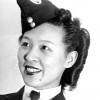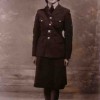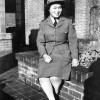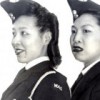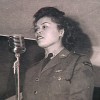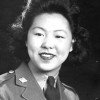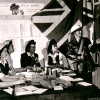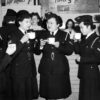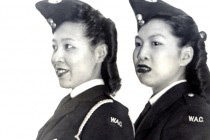
It is largely forgotten that Chinese Canadian women participated in the war effort during the early forties. Unlike the men, the women who joined the Armed Forces were not trained to fight nor sent off to war. Instead they replaced men in non-combat duty, freeing the soldiers for service at the front.
Six Chinese Canadian women are known to have joined the Armed Forces.
Five who joined the Women’s Army Corps were Private Edna Silaine Lowe, Corporal Lila Wong, Private Marion Laura Mah, Private Mary Ko Bong and Private Helen Hoe.
One lone Chinese Canadian woman joined the Royal Canadian Air Force, Aircraft Woman 1 Jean Suey Zee Lee.
Like the men, the women also experienced racial discrimination and prejudice in entering the Armed Forces and because of their gender, received less pay. For example, a CWAC private received just 2/3 of a soldier’s wage for similar work. [90 cents vs $ 1.30], though later this was raised to 80%.
The sight of women in uniform upset social convention. There was a belief that a women’s place was not in the uniform.
The Royal Canadian Air Force created a distinct but intergral women’s service called the Women’s Division [WD] of the RCAF. Later, the Canadian Army created the integrated the Canadian Women’s Army Corps.
Dozens of other Chinese Canadian women supported the St. John Ambulance Brigade working in civil defence. The civil defence unit was called the Women’s Ambulance Corps which was on active duty until the end of the war. The women wore para-military uniforms and were trained in home nursing, ambulance driving and first aid. The uniforms were tailored to measure by Dunn’s Tailors except forthe home made worn by Patricia Chu.
The Canadian Army drilled the women at the Seaforth Armoury in Vancouver and when they were ready, the Second Company of Platoon A proudly paraded down East Georgia Street in Chinatown, and across the Georgia Viaduct to the Beatty Street. Armoury for inspection.
Gallery
- Laura Mah Wong
- Mary Ko Bong
- Photo courtesy of City of Vancouver Archives
- Women of St. Johns Ambulance Corps (homefront)
